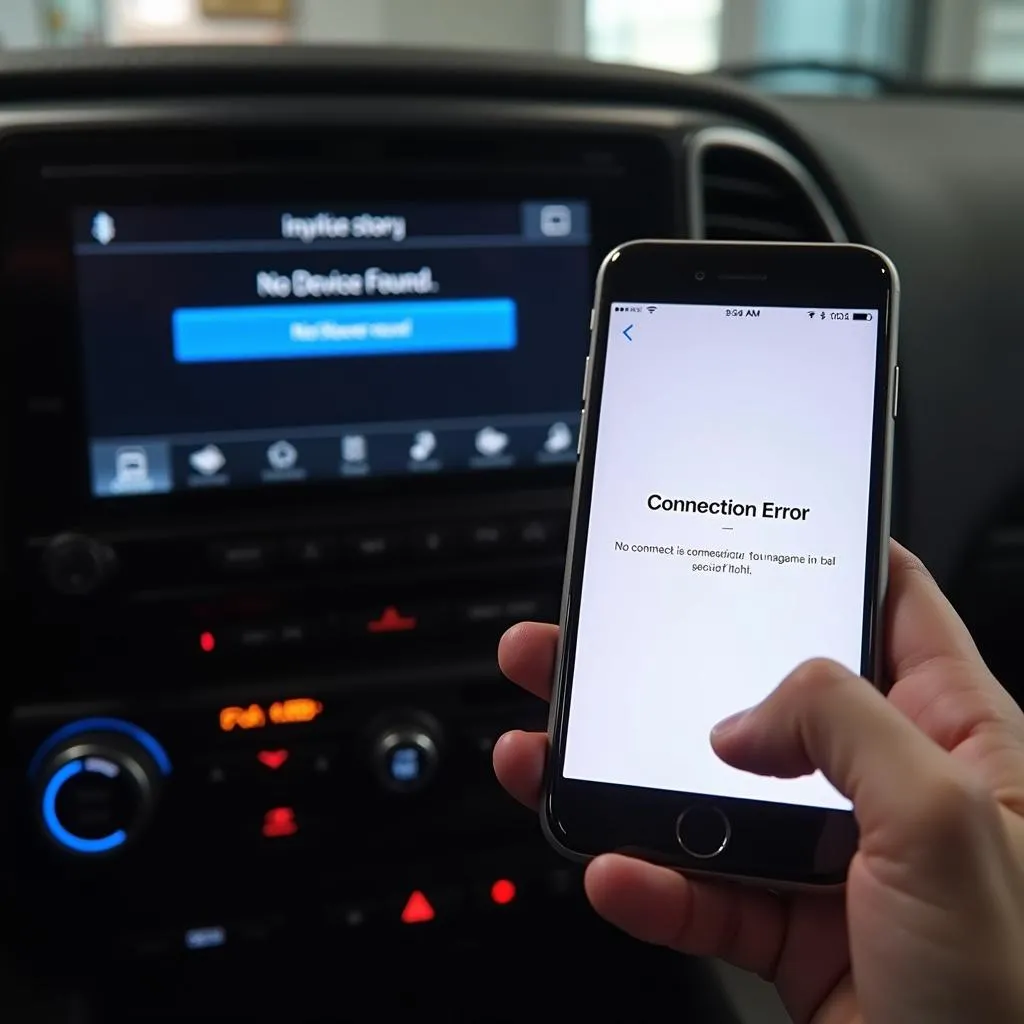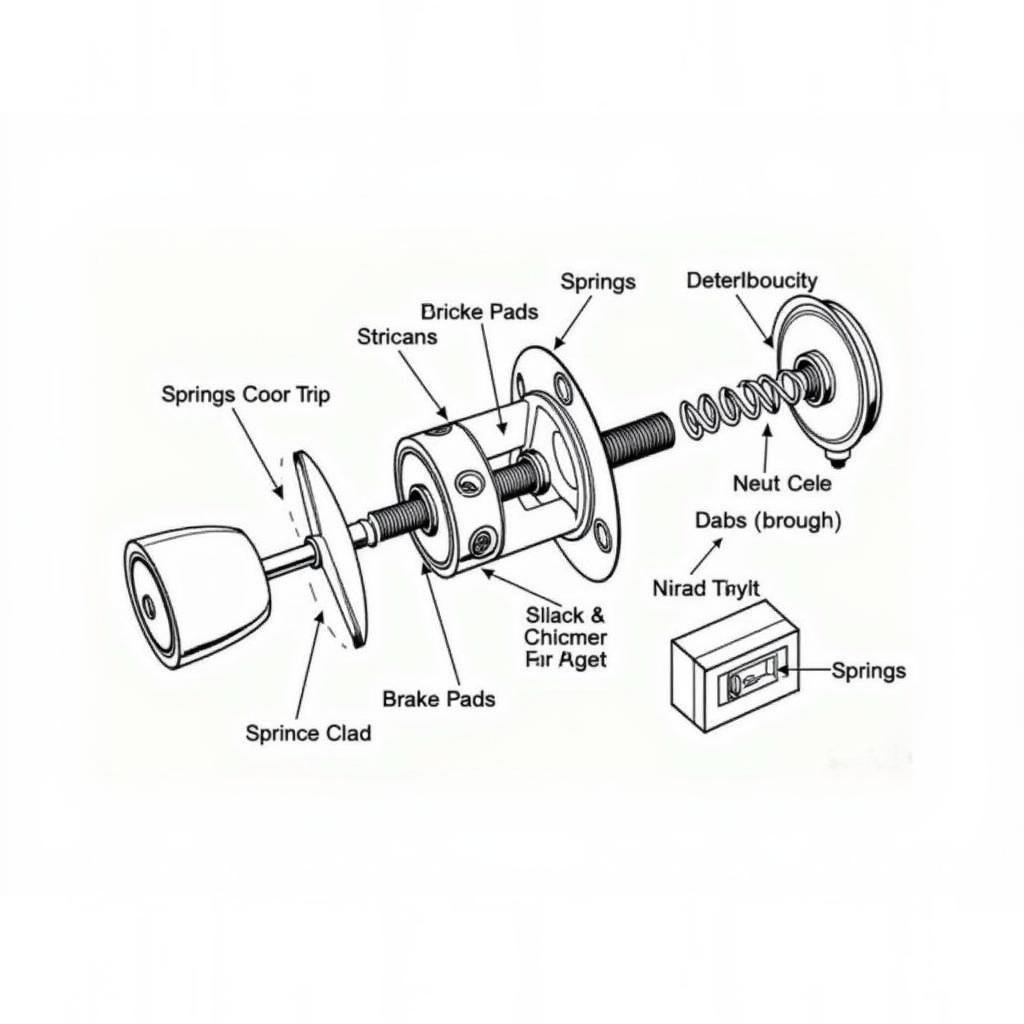Are you experiencing problems with your VW Passat TDI AdBlue system? The AdBlue system is crucial for reducing harmful emissions, and if it malfunctions, it can lead to a range of issues, including engine light warnings, reduced power, and even vehicle immobilization. This guide will help you understand the AdBlue system, troubleshoot common problems, and learn how to reset your AdBlue system effectively.
Understanding the AdBlue System
AdBlue is a urea-based solution that is injected into the exhaust stream of diesel engines to reduce nitrogen oxide (NOx) emissions. The AdBlue system in your VW Passat TDI comprises several key components:
- AdBlue Tank: This tank stores the AdBlue solution.
- AdBlue Pump: This pump delivers AdBlue to the injection system.
- AdBlue Injector: This component injects AdBlue into the exhaust stream.
- AdBlue Sensor: This sensor monitors the quality and quantity of AdBlue in the tank.
- Control Unit: This unit manages the AdBlue system and communicates with the vehicle’s engine control unit (ECU).
Common AdBlue Problems in VW Passat TDI
Here are some of the most common problems that drivers of VW Passat TDIs experience with their AdBlue system:
- AdBlue Tank Empty Warning: This is the most common issue, indicating that your AdBlue tank is low and needs to be refilled.
- AdBlue System Malfunction Warning: This message indicates a problem with the AdBlue system, and your vehicle may be limited in its performance.
- AdBlue System Error Codes: The AdBlue system often throws error codes that can be read by a diagnostic tool. These codes can pinpoint the specific issue.
- AdBlue Injection Problems: This issue can be caused by a faulty injector, a clogged nozzle, or a malfunctioning AdBlue pump.
- AdBlue Sensor Failure: A faulty AdBlue sensor can lead to inaccurate readings and inaccurate AdBlue level warnings.
How to Reset the AdBlue System on Your VW Passat TDI
Resetting the AdBlue system on your VW Passat TDI is typically done through a process involving the vehicle’s onboard diagnostics (OBD) system. However, the exact steps may vary depending on the model year and specific features. Here’s a general overview:
- Locate the AdBlue Tank: The AdBlue tank is usually located in the rear of the vehicle, often near the spare tire.
- Fill the AdBlue Tank: Ensure that you use genuine AdBlue solution and refill the tank to the correct level.
- Start the Engine: Turn on the ignition and start the engine.
- Access the Onboard Diagnostic System: Most VW Passat TDIs have an onboard diagnostic system that can be accessed through the vehicle’s instrument cluster or infotainment system.
- Find the AdBlue Reset Option: Search through the menus for an option related to the AdBlue system or emissions.
- Reset the AdBlue System: Follow the prompts to reset the AdBlue system. This may involve confirming the AdBlue level and restarting the engine.
Expert Tips for Resetting Your AdBlue System
“When dealing with AdBlue system issues, it’s important to remember that the system is quite sensitive,” says Dr. Emily Carter, a leading automotive engineer and expert in emission control systems. “Attempting to reset the system without proper knowledge can sometimes lead to further problems.”
Here are some expert tips to keep in mind:
- Use Genuine AdBlue: Always use genuine AdBlue solution, as counterfeit or substandard products can damage your AdBlue system.
- Refer to Your Owner’s Manual: Your vehicle’s owner’s manual will provide detailed instructions for resetting the AdBlue system and troubleshooting any issues.
- Seek Professional Help: If you’re experiencing persistent AdBlue problems, consult a qualified automotive technician.
Conclusion
By understanding the AdBlue system, recognizing common problems, and following the proper reset procedures, you can effectively manage the AdBlue system in your VW Passat TDI. Remember to use genuine AdBlue, consult your owner’s manual, and seek professional assistance when needed. Maintaining a healthy AdBlue system ensures smooth driving, optimal performance, and reduced emissions.
FAQ
-
Q: What happens if I don’t reset the AdBlue system after refilling the tank?
A: The warning light may remain on, and your vehicle may have restricted performance or even be immobilized. -
Q: Can I reset the AdBlue system without a diagnostic tool?
A: In some cases, a simple reset may be possible by following the steps in your owner’s manual. However, if the system has a serious fault, a diagnostic tool is likely necessary. -
Q: How often should I refill the AdBlue tank?
A: The frequency of refills depends on your driving habits and the size of the AdBlue tank. Consult your owner’s manual for specific recommendations. -
Q: What are the consequences of ignoring AdBlue warning lights?
A: Ignoring these warnings can lead to engine damage, reduced performance, and even costly repairs. -
Q: What is the lifespan of the AdBlue system?
A: The AdBlue system is designed to last for the life of the vehicle, but proper maintenance and timely refills are crucial for its longevity.


